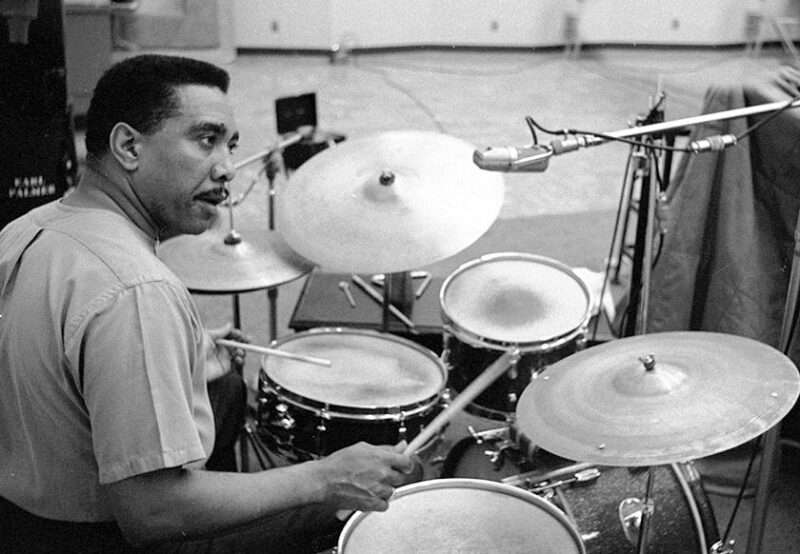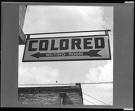In the late 19th century, former slaves along with their children began gathering in the streets of New Orleans to forge a musical tradition of their own, giving birth to the style of jazz. Having been robbed of centuries of cultural and musical heritage during slavery, this style of music Blacks created would ultimately be a very unifying force. However, Blacks in New Orleans were still facing deeply entrenched Jim Crow laws and because of this, many of the very talented musicians that came out of New Orleans and the deep south were forced to leave and find work elsewhere. Needing to earn a living wage, these gifted musicians turned to cities like Los Angeles, Nashville, and New York for work, effectively separating the cultural and musical heritage from the history of Jazz. The very people that created and cultivated the sound of Jazz that is still beloved today were not welcome in place they created it in. Had New Orleans been a more inclusive place that allowed musicians to flourish, the many musicians that left or stopped performing all together may have allowed for New Orleans to be the entertainment hub of the south during this time.

Earl Palmer Drumming
One of the people greatly effected during this time was local New Orleanian and renowned drummer, Earl Palmer. Generally credited with inventing Rock & Roll drumming, Palmer has solidified his place as a music legend. Although he is mainly recognized for his contributions to Rock and Roll, it was actually a small part of Palmer’s career. BackBeat: Earl Palmer’s Story, a first-person account of Earl Palmer’s life in which much of the content is Palmer’s own voice, reveals that playing Rock music was merely a professional commitment, and seldom a thrill for him. His heart belonged to Jazz, however, due to the hostile social climate in New Orleans, Palmer’s career would ultimately land him in LA where he would be recognized in a different genre other than his own. Palmer’s early years in the clubs and on the streets of New Orleans particularly stand out, but the racism and segregation he faced as a black musician in New Orleans would ultimately separate him from his heritage as a Jazz musician and from his home.
Born 1924 to a single mother who was a dancer and singer, Earl Palmer was exposed to music at a very early age. By 5 years old, Palmer had already started tap-dancing for money, whether it was on the street, or in the whites-only clubs on Bourbon Street, where the MC’s would say “and now for a special treat we’re going to bring on some little n****r boys to dance for you all” (Earl Palmer, BackBeat: Earl Palmer’s Story). While other kids were busy in school, Palmer was on the road with his mother’s traveling show, soaking up the music atmosphere everywhere he went. After many years of hectic touring and making it through a wartime stint in the Jim Crow Army overseas, Palmer was back in New Orleans and was soon hired by prominent band leader Dave Bartholomew. Shortly after that, Palmer was providing drum lines behind proteges like Fats Domino and Little Richard, who’s upbeat styles encouraged Palmer to create an equally powerful backbeat, giving birth to modern day Rock & Roll.

Segregation 20th Century
Although Palmer was employed, it was not easy being a black musician living in New Orleans at that time. The central focus of Louisiana culture became reinserting the racial class system of the pre-Civil war era. Throughout the 20th century, just as Nashville, New York, and Los Angeles became major media centers and entertainment hubs, New Orleans’ black musicians still faced racism which hindered their ability to thrive within their own communities. With their work being heavily devalued, many New Orleans musicians, including Louis Armstrong, decided to leave town for more opportunities. Earl Palmer was another one of these musicians. But for Palmer, the extra few hundred dollars per week he could earn in Los Angeles was not the only reason for his move: an interracial relationship with Susan Weidenpesch, whom he later married, was also a major part of his decision. The racist climate in New Orleans now not only affected his profession as a musician, but also his relationship with the woman he loved. So, he left.
The very place which gave Earl Palmer his beat was turning its back on him. This betrayal we see is a trend with a lot of musicians that came out of the deep south during this time. New Orleans very well could have been an entertainment hub in the likes of other major cities, but their treatment of the black musicians like Earl Palmer, who molded the sound Southerners fell so in love with, would drive many of them away. In Louisiana, laws that still banned integrated activities between Black and Whites effectively made bands with members of both races illegal. Had New Orleans not been stuck in the ways of the pre-Civil war era during a time where Jazz was flourishing, the city may have emerged as an entertainment hub much like that of Nashville or Los Angeles. These gifted musicians would have been free to collaborate and truly cultivate the sound of Jazz and is still beloved today.
 NOLAbeings
Multimedia artist Claire Bangser created NOLAbeings as a portrait-based story project that marries...
NOLAbeings
Multimedia artist Claire Bangser created NOLAbeings as a portrait-based story project that marries...
 Data corner: Adobe Suite (create a PDF, social media graphic, presentation, edit a photo and video
Data corner is where you go to work with analytics and top tech skills. It takes on everything from PERL and SQL to Canva and Sprout Social.
Data corner: Adobe Suite (create a PDF, social media graphic, presentation, edit a photo and video
Data corner is where you go to work with analytics and top tech skills. It takes on everything from PERL and SQL to Canva and Sprout Social.
